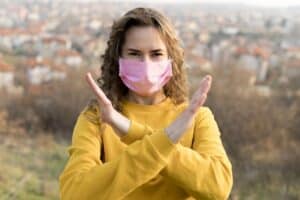Most of us have stood in front of the mirror, wondering why breakouts always seem to show up in the same spots your forehead, chin, cheeks, or even along the jawline.
It feels personal, almost like your skin is trying to send a message. And in a way, it is. According to the ancient practice of face mapping, different areas of the face are believed to be connected to internal organs and lifestyle habits.
That means those stubborn pimples aren’t always just from makeup, stress, or hormones they might be clues to what’s happening inside your body.
Today, face mapping is gaining attention again, not just on social media but among people looking for deeper answers to long term skin issues. While some parts of this method come from traditional Chinese and Ayurvedic medicine, modern dermatology also recognizes a link between internal health and where breakouts occur.
For example, hormonal changes often trigger acne on the jawline and chin, while digestive imbalances may show up on the cheeks or forehead.
So, if you’ve ever wondered, “Why do I always break out in the same place?” you’re in the right place. In this guide, we’ll break down what each zone on your face might be telling you, how much of face mapping is backed by science, and what you can actually do to clear your skin from the inside out.
ACNE FACE MAP
What is an acne face map? Acne face map is a technique based on monitoring the area where acne and other breakouts appear on the skin.
Once you have analyzed the spread pattern, you can find out its trigger point and the reason it is happening. Under this method, you will divide your face into certain zone.
The zones are:
FOREHEAD
Starting from the top, the first zone is the forehead, also known as the hairline area or the temple zone. Understandably, acne occurring in these areas is known as forehead acne.
This usually occurs when wrong hair products are used.
Either the acne products can have too much oil or wax; either way, it leads to breakouts and acne on the forehead.
When applied, these products clog the pores and make it hard for your skin to breathe, which leads to acne.
One important thing to remember is never to let any oil-based hair product touch your face.
EYEBROWS
According to the acne face map, acne between eyebrows occurs when there is some diet problem.
The theory says that if you consume too many fatty acids or you consume a lot of alcohol, the skin between your eyebrows starts to break out.
To improve acne on this part of your face, ensure a healthy and a good, balanced diet.
CHEEKS
The third zone of the face, according to the acne face map, is the cheek area. Acne and breakouts occur on the cheeks due to rubbing or applying something in a hard manner on the skin.
It can also occur due to toxins on the cell phone. When we make a call and keep the phone in contact with our cheeks for a long time, it causes it to break out. Rubbing something on the cheeks is a no.
Apply everything with a gentle hand on your face to avoid acne.
JAWLINE
While this has yet to be proven, an acne face map suggests that acne and breakouts on the chin or jawline area occur due to hormonal imbalance.
Women who are pregnant or are menstruating face a lot of breakouts in their jawline and chin area. Apart from that, acne on the jawline can be a serious issue in women as it indicates a high amount of male hormone in the female body.
Acne face map is a good and modern day technique that allows us to read our breakouts and find the deep rooted reason behind our acne.
It allows us to understand our skin and its sensitivity in detail. Acne face map will help us in the long run and the short run as it will enable us to understand our skin type and deal with it accordingly.
Conclusion
Your skin is more than a surface, it’s a reflection of what’s happening inside your body. Face mapping isn’t about diagnosing illnesses or replacing a visit to the dermatologist, but it does offer an interesting perspective.
When certain areas of your face keep breaking out, it’s worth paying attention. Maybe your chin is hinting at hormonal shifts, your forehead is affected by stress or sleep deprivation, or your cheeks are reacting to diet or environmental irritants.
Understanding these patterns gives you a starting point. Instead of treating acne as a random problem, you begin to approach it more thoughtfully by balancing skincare with lifestyle changes.
Clean products, a nutrient rich diet, proper hydration, stress control, and regular cleansing can make a noticeable difference.
Combining these habits with professional advice from a dermatologist or skincare expert ensures you’re treating both the symptoms and the root cause.
At the end of the day, your skin is communicating with you.
The question is: Are you listening? By decoding these signals, you’re not just clearing breakouts, you’re taking a step toward a healthier, more connected relationship with your body and your skin.






